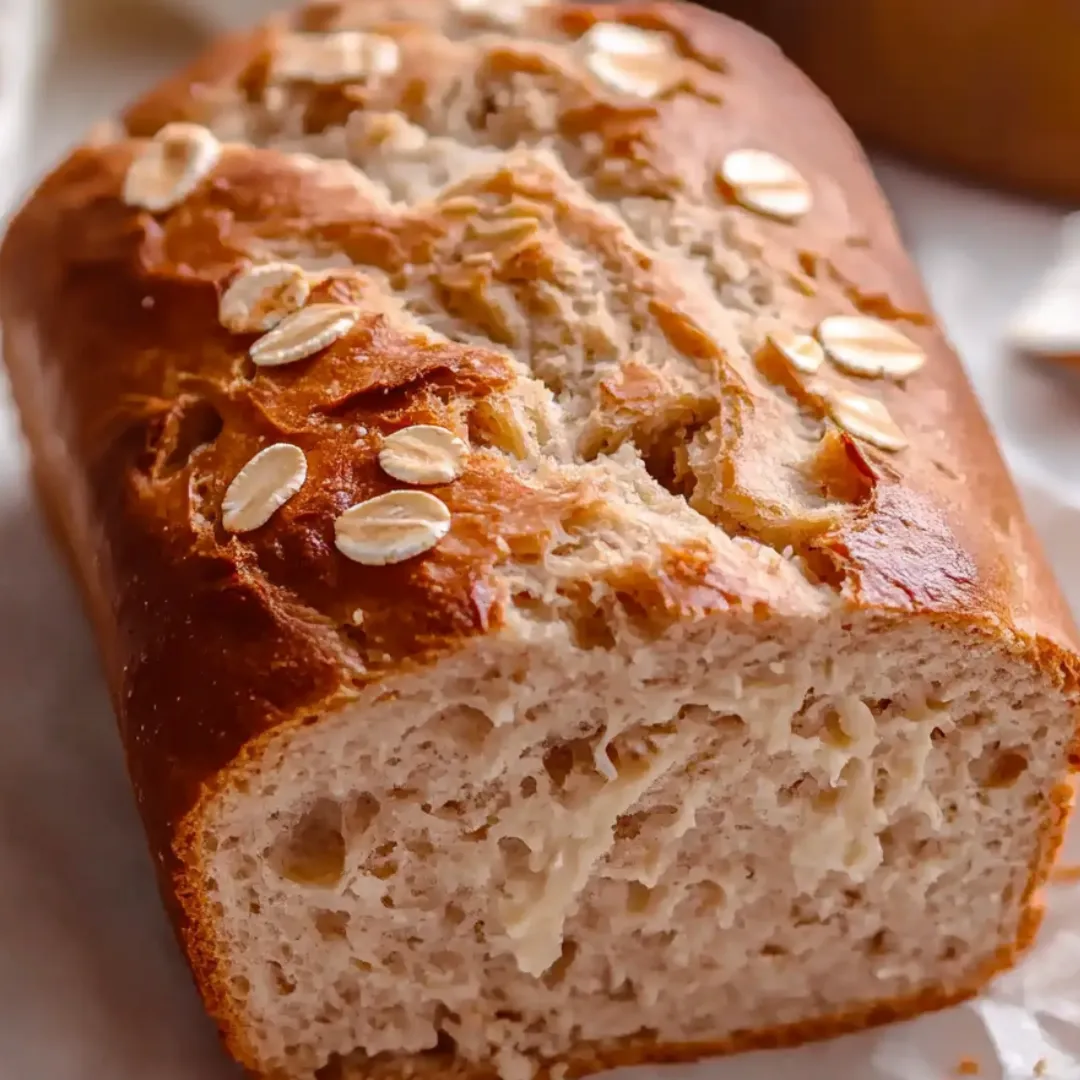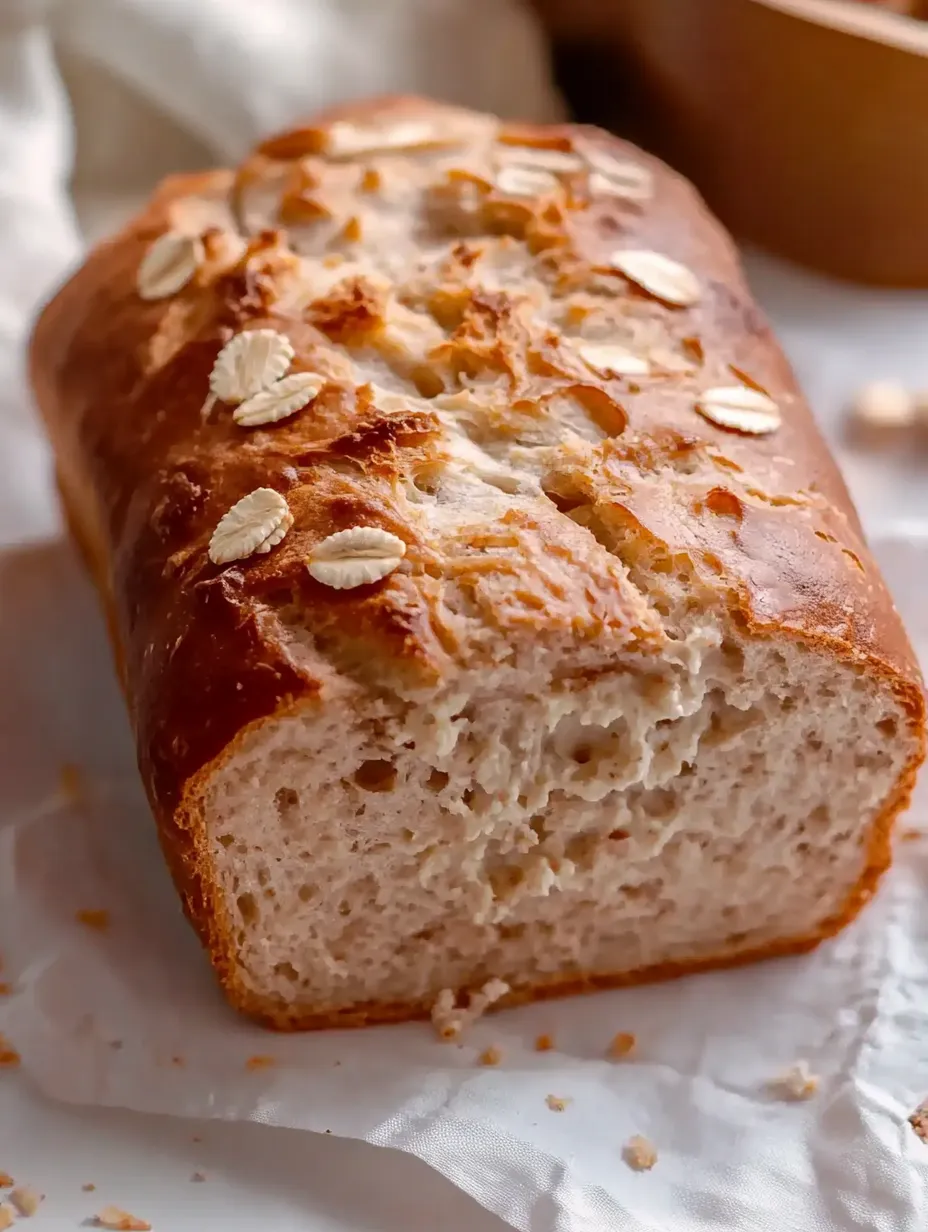 Pin it
Pin it
This soft, fluffy bread transforms humble cottage cheese into an irresistibly tender loaf packed with protein. Unlike traditional bread that relies on yeast and flour, this innovative recipe combines the richness of cottage cheese with wholesome oats for a nutritious alternative that's ready in just 40 minutes. Perfect for protein-focused eating plans, this versatile bread delivers a satisfying texture and savory flavor that makes it ideal for everything from breakfast toast to sandwich bread to dinner accompaniment.
I first experimented with this recipe when looking for a higher-protein alternative to typical bread that would keep me full longer throughout the day. My husband, who typically dismisses 'healthy' bread variations, was genuinely surprised by how soft and delicious it turned out. What makes this bread special is its tender, moist texture that mimics traditional bread without the refined carbohydrates. We now keep a loaf in the refrigerator at all times for quick, protein-packed meals and snacks.
Ingredients
- Cottage cheese: The star ingredient providing moisture, protein, and a subtly tangy flavor. Full-fat cottage cheese creates the best texture and richness.
- Rolled oats: Delivers fiber and nutrients while creating structure without traditional flour. Old-fashioned rolled oats offer the best texture, though quick oats work in a pinch.
- Egg and egg whites: Binds the ingredients while adding protein and creating a light, fluffy texture. The combination of whole eggs and whites achieves the perfect balance of richness and lift.
- Baking powder: Provides the necessary rise without requiring yeast or lengthy proofing time. Make sure it's fresh for optimal leavening power.
- Salt: Enhances all the flavors and balances the natural tanginess of the cottage cheese. A small amount goes a long way as cottage cheese already contains sodium.
 Pin it
Pin it
Instructions
- Prepare your equipment and ingredients:
- Begin by preheating your oven to 350°F (180°C) and lining a 6-inch (15 cm) loaf pan with parchment paper, leaving some overhang on the sides for easy removal. Alternatively, thoroughly grease the pan with cooking spray or oil. The exact size of the pan matters—using one that's too large will result in a flatter loaf. Before measuring, strain your cottage cheese by pouring off any excess liquid that has accumulated on top. This step is crucial as too much moisture can affect the bread's structure. Gather all ingredients and have them at room temperature if possible, which helps them blend more smoothly and bake more evenly.
- Blend to the perfect consistency:
- In a blender, combine 1½ cups strained cottage cheese, 1 large egg, 2 egg whites, 1 cup rolled oats, 2 teaspoons baking powder, and ½ teaspoon salt. Pulse a few times to break up the larger ingredients, then blend on medium speed until the mixture is smooth and uniform, about 30-45 seconds. Be careful not to over-blend, as this can incorporate too much air and affect the bread's texture. The batter should be thick but pourable, similar to a thick pancake batter. If it appears too thin, add an additional tablespoon of oats; if too thick, add a splash of milk. The blending process breaks down the oats and cottage cheese curds, creating a cohesive batter that will bake into a uniform bread texture.
- Prepare for baking:
- Pour the blended batter into your prepared loaf pan, using a spatula to smooth the top into an even layer. If desired, this is the time to sprinkle additional toppings like a handful of rolled oats, sunflower seeds, or pumpkin seeds on top for extra texture and visual appeal. Give the pan a gentle tap on the counter to release any large air bubbles that might have formed during the blending process. These air pockets, if left in the batter, could create holes in the finished bread. The smooth, even distribution of the batter ensures uniform baking and proper rising.
- Bake to golden perfection:
- Place the loaf pan in the preheated oven on the middle rack and bake for 30-40 minutes, until the top is golden brown and a toothpick inserted into the center comes out clean. The exact baking time may vary depending on your oven and the moisture content of your cottage cheese, so start checking at the 30-minute mark. The bread will rise and develop a beautiful color as it bakes, filling your kitchen with a warm, inviting aroma. Once done, remove from the oven and allow the bread to cool in the pan for at least 15 minutes. This cooling period is essential as it allows the bread to set properly and makes it easier to slice. After cooling, use the parchment paper overhang to lift the bread out of the pan and transfer it to a wire rack to cool completely before slicing.
I discovered the importance of properly straining the cottage cheese after my first loaf turned out too moist in the center. Now I take the extra minute to drain off excess liquid and even pat the cheese with a paper towel if it seems particularly wet. Another game-changing discovery was the importance of pan size. My early attempts in a standard 9x5-inch loaf pan produced a flat bread because the batter wasn't enough to fill it properly. Switching to a smaller 6-inch pan created the perfect height and shape for beautiful, even slices.
Serving Suggestions
This versatile bread complements a wide variety of meals and occasions. For a protein-packed breakfast, toast a slice and top with avocado and a poached egg, or spread with nut butter and sliced bananas for a sweet start to the day.
For lunch, use two slices to create a substantial sandwich filled with turkey, lettuce, tomato, and mustard. The bread's sturdiness holds up well to fillings without becoming soggy.
At dinner, serve warm slices alongside hearty soups or stews—the bread's subtle flavor won't compete with your main dish but provides the perfect vehicle for soaking up delicious broths and sauces.
 Pin it
Pin it
Creative Variations
The basic recipe serves as an excellent canvas for customization. For a Mediterranean twist, add 1 teaspoon of dried oregano, ½ teaspoon of garlic powder, and ¼ cup of chopped olives to the batter before baking.
Create a protein-packed breakfast bread by adding 1 tablespoon of maple syrup, 1 teaspoon of cinnamon, and ¼ cup of chopped dried fruits like apricots or cranberries to the mixture.
For extra texture and nutritional benefits, stir in 3 tablespoons of mixed seeds (sunflower, pumpkin, flax, or chia) after blending the main ingredients. This adds crunch and visual appeal along with healthy fats and additional protein.
After making this bread countless times, I've discovered that blending the oats separately into a flour-like consistency before adding the wet ingredients creates an even finer texture that more closely resembles traditional bread. I've also found that adding a tablespoon of olive oil to the batter makes it slightly richer without significantly affecting the nutritional profile. The most surprising discovery was how well this bread freezes—individual frozen slices can go straight into the toaster for a quick, protein-packed breakfast that tastes freshly baked.
Frequently Asked Questions
- → Can I use low-fat cottage cheese?
- Full-fat is recommended for best texture, but low-fat can work with slight changes in consistency.
- → How do I store this bread?
- Keep in an airtight container at room temperature for 2-3 days, or refrigerate for up to a week.
- → Can I freeze this bread?
- Yes! Slice and freeze for up to 3 months. Thaw at room temperature or toast directly from frozen.
- → Is this bread keto-friendly?
- It's low-carb but not strictly keto due to oats. Consider using almond flour as a substitute.
- → Can I add flavors to the bread?
- Try adding herbs, garlic powder, or other seasonings to customize the flavor.
